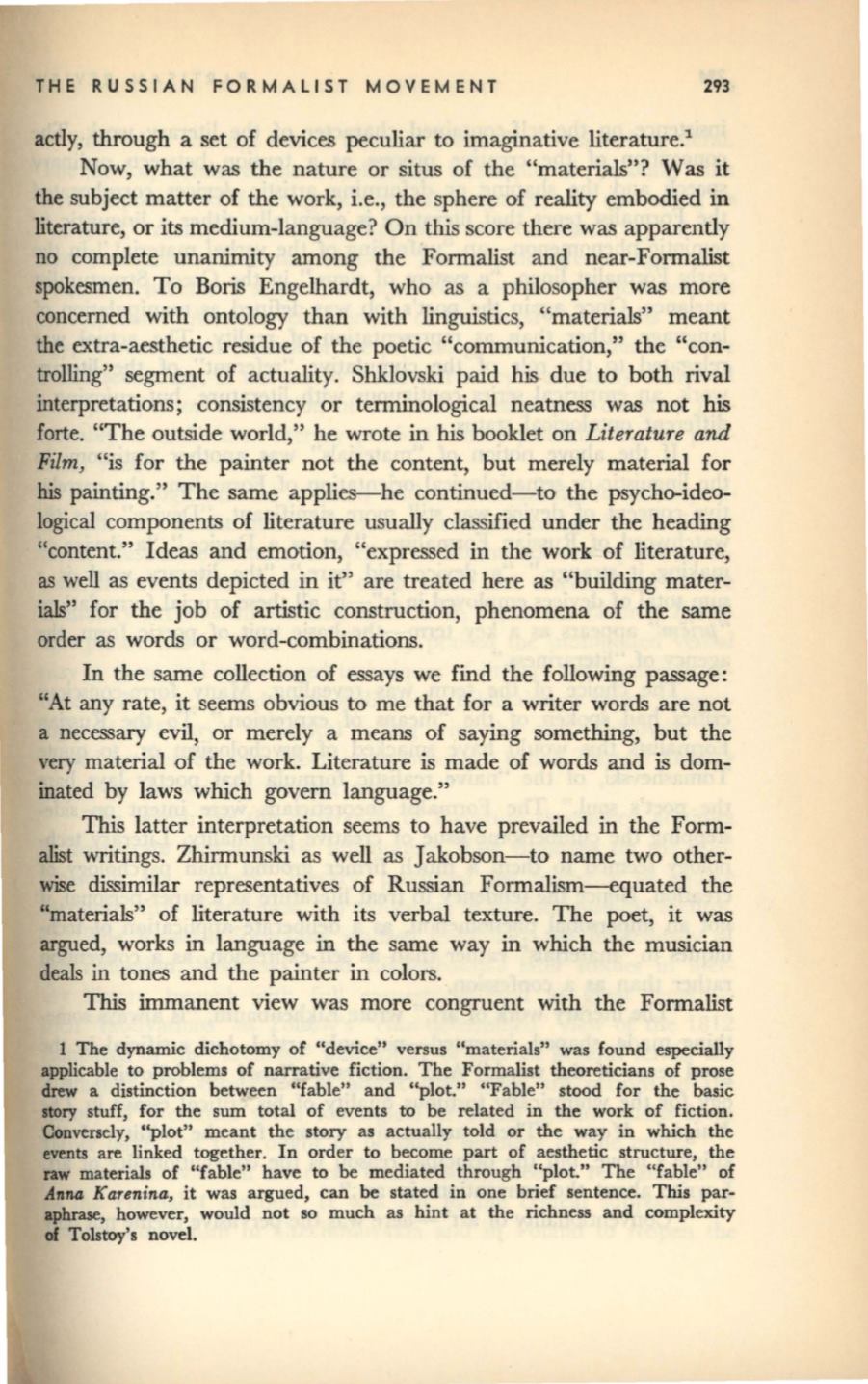
THE RUSSIAN FORMALIST MOVEMENT
293
actIy, through a set of devices peculiar to imaginative literature.
1
Now, what was the nature or situs of the "materials"? Was it
the subject matter of the work, i.e., the sphere of reality embodied in
literature, or its medium-language? On this score there was apparently
no complete unanimity among the Formalist and near-Formalist
spokesmen. To Boris Engelhardt, who as a philosopher was more
concerned with ontology than with linguistics, "materials" meant
the extra-aesthetic residue of the poetic "communication," the "con–
trolling" segment of actuality. Shklovski paid his due to both rival
interpretations; consistency or terminological neatness was not his
forte. "The outside world," he wrote in his booklet on
Literature and
Film,
"is for the painter not the content, but merely material for
his
painting." The same applies-he continued-to the psycho-ideo–
logical components of literature usually classified under the heading
"content." Ideas and emotion, "expressed in the work of literature,
as well as events depicted in it" are treated here as "building mater–
ials" for the job of artistic construction, phenomena of the same
order as words or word-combinations.
In the same collection of essays we find the following passage:
"At any rate, it seems obvious to me that for a writer words are not
a necessary evil, or merely a means of saying something, but the
very material of the work. Literature is made of words and is dom–
inated by laws which govern language."
This latter interpretation seems to have prevailed in the Form–
alist writings. Zhirmunski as well as
J
akobson-to name two other–
wise dissimilar representatives of Russian Formalism-equated the
"materials" of literature with its verbal texture. The poet, it was
argued, works in language in the same way in which the musician
deals
in
tones and the painter in colors.
This immanent view was more congruent with the Formalist
1 The dynamic dichotomy of "device" versus "materials" was found especially
applicable to problems of narrative fiction. The Formalist theoreticians of prose
drew
a distinction between "fable" and "plot." "Fable" stood for the basic
story
stuff, for the sum total of events
to
be related in the work of fiction.
Conversely, "plot" meant the story as actually told or the way in which the
events are linked together. In order to become part of aesthetic structure, the
raw materials of "fable" have to
be
mediated through "plot." The "fable" of
.filM
Karenina,
it was argued, can
be
stated in one brief sentence. This par–
aphrase, however, would not so much as hint at the richness and complexity
of
Tolstoy's novel.


